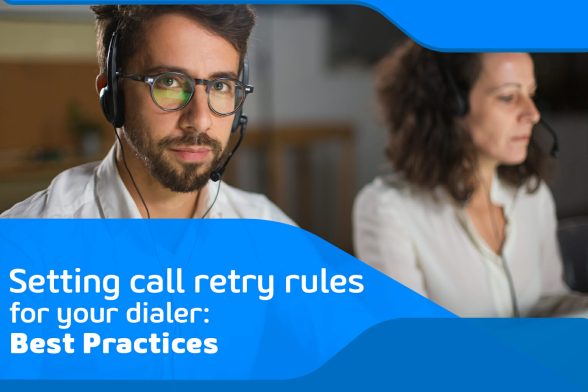- Resources
- Setting call retry rules for your dialer: best practices
Setting call retry rules for your dialer: best practices

Retry rules, if formulated intelligently, can make an agent’s life easier and reduce unwanted calls for your customers.
There is a fine line between being pesky and being persistent. And when you are telemarketing or cold calling, that line becomes even finer. Often, contact center agents need to call leads more than once to be able to speak to them. Sometimes their phones will be busy, and at other times, they will simply be unavailable. Often, people just won’t answer. But the business demands that you keep trying.
However, you don’t want to put off your prospects by constantly calling at the wrong time. So How best to set up your call retry rules on your dialer? Let’s explore.
In this article, we will explore:
Why have retry rules?
When you are using a retrying system, whether it is on your power dialer or predictive dialer, the idea is to save your agents’ time. When you have a system in place for call retrying, it can only better agent productivity because the system is lining up calls for them, making their work that much faster and easier. Retry rules basically mean that you program your dialer to retry calls within a specified framework. So the dialer does the initial work of sorting the numbers and deciding which ones to call and in what sequence.
What are the best practices for setting up your dialer retry rules?
Having retry rules in place gives you the flexibility of dialing prospects at the times they are most likely to answer. It, thus, increases the chance of pick-ups. Studies say your data is exhausted after five retries – no answer for five consecutive retries, don’t bother with the number. The ideal number of retries is three, assuming you will have enough new data flowing into the dialer for new leads. And KOOKOO can set up a rules engine to handle your retries your way.
You need to devise a retry system that works best for your business. It is important to ensure your attempts at reaching prospects do not become a nuisance. So be judicious about how often you try calling and when.
- If a number is busy at the first try, retry immediately. Set this up on your dialer’s rules engine. So that, every time you get a busy tone or message on a prospect’s number, the system redials it automatically.
- When a call goes unanswered. Do not retry a prospect at the same time of the day as the previous retry. For example, if a prospect hasn’t answered your call at 1 pm on one day then the chances of them answering at the same time the next day are even lower. So ensure that the number is dialed at another time.
- When a number is invalid. Don’t waste time on retrying a number that is invalid. Ensure your dialer detects an invalid number and does not retry them. Clear these numbers from your database immediately.
Prioritize based on the number of tries. It makes more sense to place new data,(new phone numbers), at the top of the list, followed by those you have already tried calling once and then twice and so on. This way, you can target multiple phone numbers, almost simultaneously. - Watch out for certain time slots. It has been seen that 11.00 and 13.00 hours and 15.00 and 17.00 hours are usually the busiest hours for any working people. If your target market is someone who doesn’t keep regular office hours, then the rules reverse, and these become the best times to dial.
You only have to decide on some key points for your rules engine:
- How many times do you want the dialer to retry a number?
- When do you want it to retry that number?
- How many times should it ring before you disconnect and tag the call as unanswered?
- Do you want to put reason codes in place for retries? This means the system decides the retries based on reasons why a prospect did not answer. For example, you can program your dialer to retry a number immediately if it was busy at the first attempt but retry the next day if the number is out of network coverage area.







